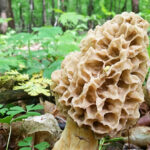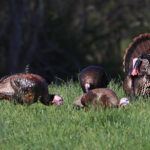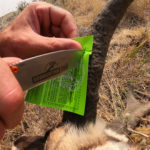Turkey decoys have become quite the controversial topic in recent years. Some hunters love them. Other hunters hate them. The critics say you don’t need a decoy to kill a turkey. And while that’s true, decoys can certainly add an exciting element to the hunt.
But not just any decoy setup will work. You need to consider the story you’re trying to tell with your decoys. Don’t just throw a decoy out in front of your tree and call it good. Your decoys are designed to paint a picture in that gobbler’s mind. What is the message you’re trying to convey to the bird you’re after? When done properly, your decoys can help close the deal. Here’s a look at the best way to setup turkey decoys this spring to bring your bird within range.
Keep Them Visible
Yes, this step is a bit on the basic side. But sadly, many hunters fail to consider the lay of the land and get down at a turkey’s eye-level to see what a turkey can, or can’t, see. Make sure your decoys are visible from approaching birds across the field in a variety of directions. Is there a slight rise in the field that keeps your decoys out of view?
You hear hunters say it all the time after a foiled encounter – “I don’t think he ever saw our decoys!” Chances are, he probably didn’t. Make sure your decoys are up on the high ground. Not hidden by grass, brush, or changes in the landscape.
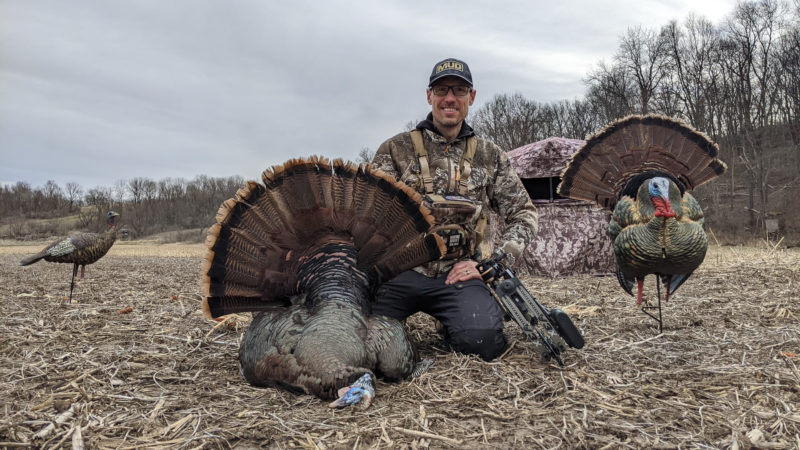
Keep Them Close
A lot of hunters make the mistake of putting their decoys too far out. You’ll want to make sure to keep them close enough to ensure a shot opportunity, whether the birds commit to the decoy, or hang up further out.
If you set your decoys at 25 yards, and the bird hangs up 10 or 15 yards further out, you’ve got quite the poke when bowhunting turkeys. And the same can be said for the hunter toting a shotgun. Keep your decoys in tight, and you’ll bring your birds closer. When bowhunting, it’s hard to beat decoys set up at 10 yards, and 15 – 20 for the shotgun hunter.
Paint a Picture
Have you considered what story you’re trying to portray with your decoys? Do you run a single hen? A hen with a jake? Or do you use a strutter decoy? Each one of these tells a different story.
A jake standing behind a hen can play on the territorial instincts of any gobbler around. They’ll come fast and furious to break up what appears to be a young punk attempting to breed one of his hens. This is one of the best decoy sets for consistent results.
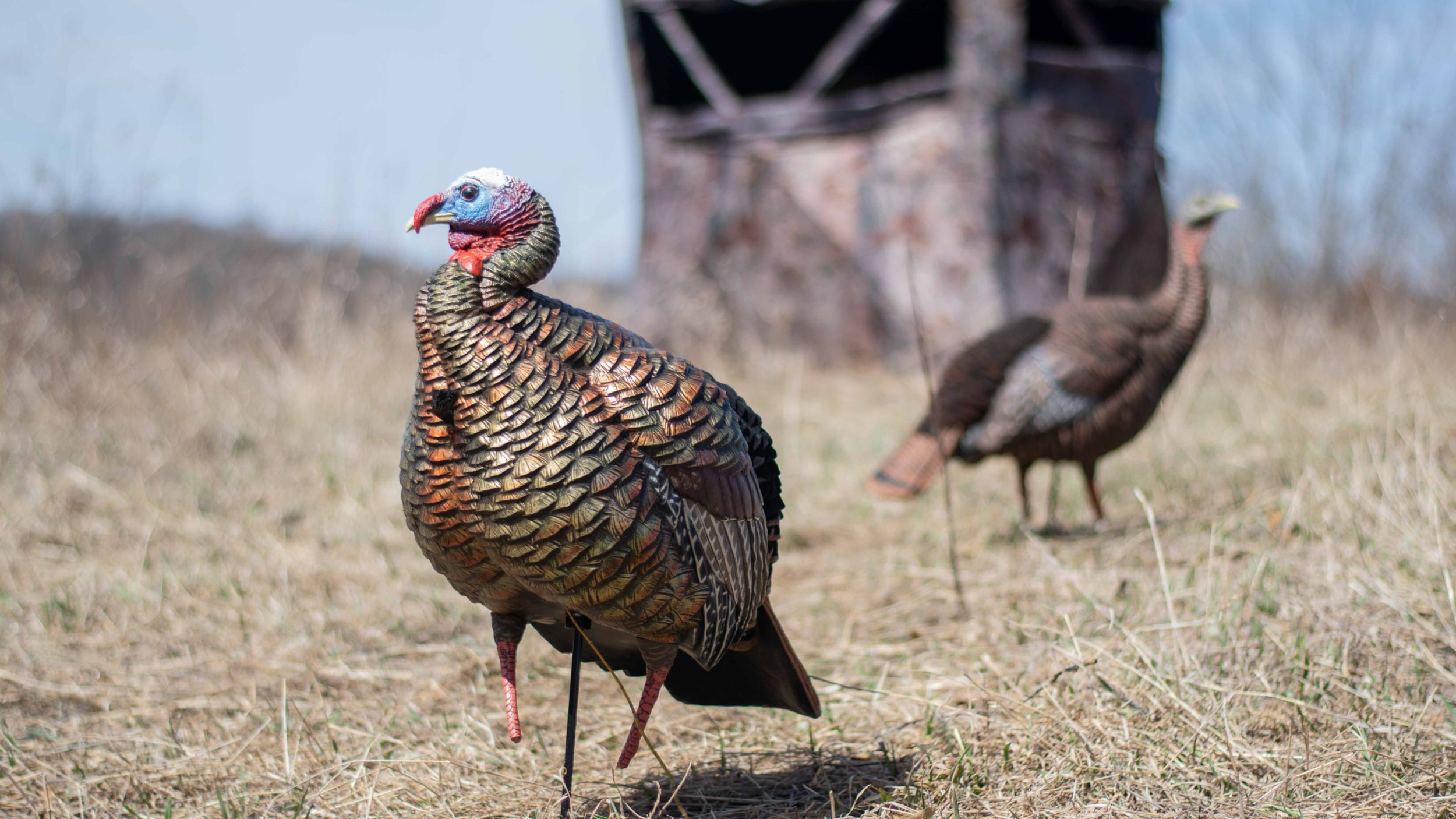
A feeder hen decoy tells a gobbler she’s content, there’s food here, and this is where the party is happening. It’s a great option if you only use one decoy.
However, one of the decoys with the most eye-catching appeal is a strutter decoy. They came on the scene in the last 20 years and changed the game for getting a gobbler’s attention at long distances.
The strutter plays on the instincts of the boss tom. It’s a decoy that will bring gobblers running to your setup. It works really well for the boss, or those feisty 2-year-old birds that are ready to rumble.
The strutter paints the picture that a new bird has arrived and is trying to be the boss and attract the ladies. It can work really well. But it can also deter any subordinate birds that have been whipped by the boss. Using this decoy can go either way, depending on the bird you’re dealing with.
Keep Your Decoys Facing You
By nature, the hen was designed to go to the gobbler. That’s why decoys facing out into the field will often cause a gobbler to hang up and wait. Decoys facing the hunter will make a gobbler think he’s being left out and cause him to push in to address the situation.
A gobbler will typically want to make eye contact with a jake or strutter decoy. When he circles around to make eye contact, he’ll be right in the hunter’s lap for the shot.
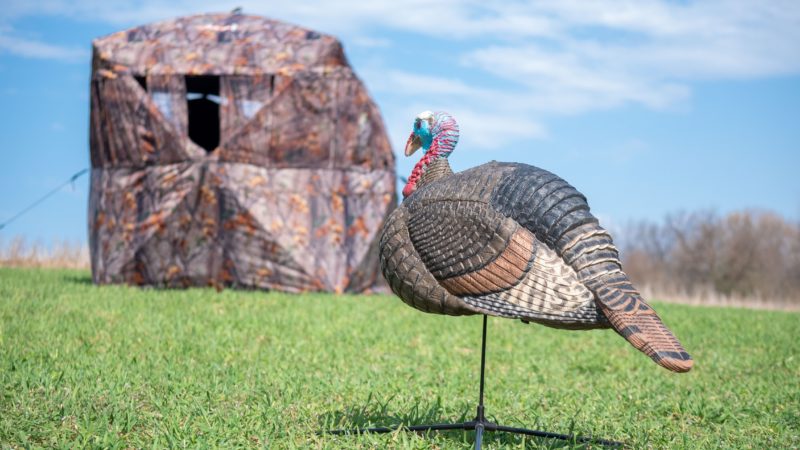
Add Motion
Motion in the decoy can be the single greatest factor to sealing the deal on a longbeard that’s suspect of your setup. This can be achieved with the use of a motion decoy stake.
These stakes allow the decoy to spin and bob on the slightest breeze. Battery operated stakes (where legal) will make all the motion for you, regardless of the breeze.
A jerk-string (fishing line) can also be used to manually add motion to your decoy. This is particularly effective for a jake decoy mounted over the top of a hen decoy in the breeding position.
The wobbling motion of the jake will make it appear that he’s doing his best to breed the hen. It’s a tactic that’ll drive a gobbler crazy when he sees the presentation.
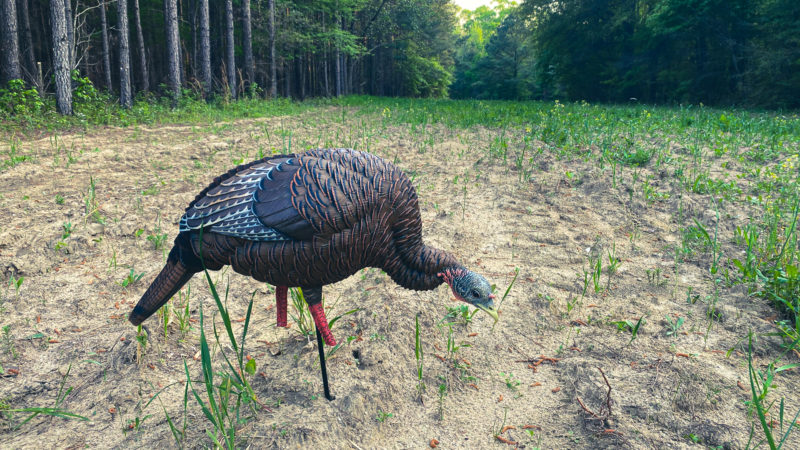
Wrapping Up
Turkey calls are standard equipment for the turkey hunter, but when you’re set up in the right spot, a decoy may be all you ever need to punch your turkey tag.
Location is everything when it comes to getting your bird in range. The right location, with the right decoy, and you’ll have the perfect combination to tag your turkey this spring.

 By
By 